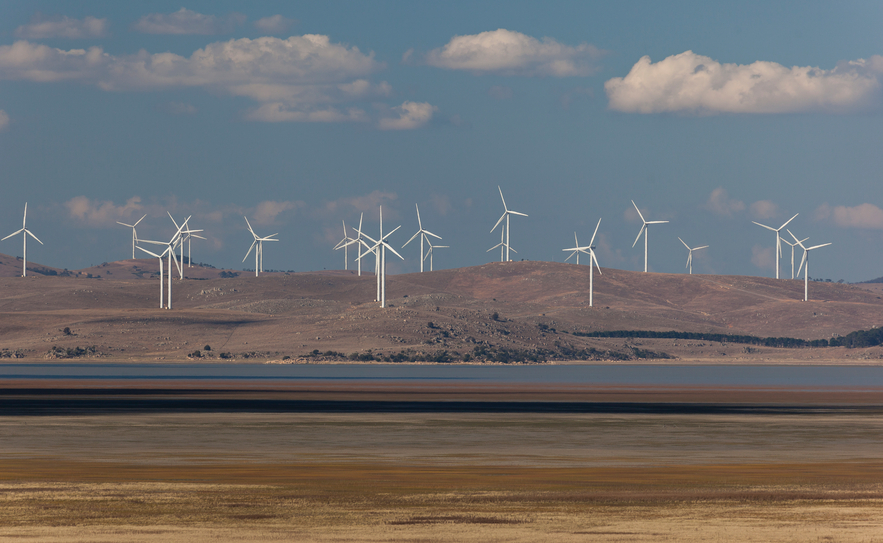Powering political consensus
A bright energy future in Australia depends on greater policy agreement between all political parties, Ken Baldwin writes.
When it comes to energy policy, this election is unlikely to see a repetition of the histrionics over Lake George wind farms that followed the last election.
But even though we might now have closer alignment between the major parties over the need to meet the challenges of climate change, there are still major points of difference when it comes to how they address these challenges.
Irrespective of the election outcome, the energy rollercoaster over the last decade of destructive Government policy uncertainty has to come to an end – in order to provide a clear path forward for industry to invest in our energy future.
Whichever party gains power, a major achievement would be a bipartisan commitment towards stable energy policy for the coming decades that simultaneously meets our post-Paris climate change obligations, and at the same time contributes to our future energy productivity, energy access and energy security. Although energy is not the only solution to global warming, it is by far and away the major contributor and one of the most effective areas in which to make rapid progress.
While both major parties are now committed to the new Renewable Energy Target (RET – revised downward under the Abbott Government to provide 23 – 24 per cent of electricity generated by renewables by 2020), the Labor Party is upping the ante to promise 50 per cent of our electricity from renewables by 2030. This won’t necessarily be achieved by raising the RET per se, but may be the result of a suite of measures yet to be articulated.
The Coalition, on the other hand, has committed to continuing the Direct Action policy which in effect creates an auction for the most cost-effective emissions reduction projects in key energy-related sectors.
However, Direct Action won’t drive the change needed in the wider economy to reduce emission levels across the board. This can only be achieved by placing a price on carbon – a process widely recognised by economists as being the most efficient way of reducing carbon pollution in any economy.
By contrast, Labor has committed to implementing an emissions trading scheme that will place a price on carbon and which will enable Australia to take its place in a global emissions market. If we do not engage with an inevitable world price on carbon, Australia will be left economically, geopolitically and morally isolated.
Following this election, a return to the bipartisan support for an emissions trading scheme – as was almost achieved between the Rudd Government and the Turnbull-led Opposition back in 2009 – would be a significant outcome. Indeed, bipartisan commitment to energy policy certainty would enable the massive flow of investment that Australia needs in coming years to replace our ageing fleet of coal-fired power stations, most of which are due to retire in the next 20 years.
Industry needs certainty in order to make multi-decadal investments, and this can only come from agreement between political parties. This includes the Greens and other minor parties who potentially – through balance of power in the Senate – can destabilise policy consensus, as was singularly demonstrated by the intransigence of the Greens under Bob Brown that helped fracture the Turnbull-Rudd emissions trading consensus.
When it comes to large-scale infrastructure, the last thing this country needs is a continuation of the adversarial politics of opposition. Good ideas – such as the original National Broadband Network concept of fibre to the home – should not be opposed purely because they originated on the other side of politics.
A good start would be for the major parties to embrace energy market reform. We need to bring our last-century energy regulations into the twenty-first-century reality of modern technologies, which can feed energy into the grid from rooftop solar or other distributed renewable sources, and store surplus electricity in batteries or off-river pumped hydro systems. We need electricity prices that reflect the time-of-use in order to reward consumers who use smart technologies to shift their energy needs away from times of peak demand.
In the transport sector, electrification could make huge inroads into our fossil fuel emissions. Australia has an enormous opportunity following the demise of vehicle manufacturing in this country to introduce stringent new carbon emission standards on imported cars that favour the rapid uptake of state-of-the-art electric vehicles.
The next Federal Government should also take a close look at the recommendations of the South Australian Royal Commission into the Nuclear Fuel Cycle to see what role this could play in Australia’s economic future, well beyond the death throes of the current mining boom.
What we need in our democracy is recognition of common goals and good ideas on both sides of politics that will contribute to our energy and climate future, and will avoid the risk of political vandalism to our infrastructure.
Only then can we build political consensus to establish long-term policy guidance, that will provide the certainty needed for industry to drive our energy future forward.
The article was first published at APPS Policy Forum.

